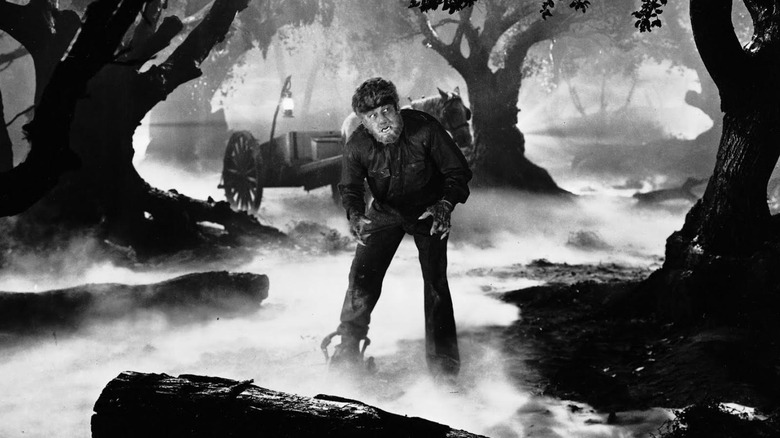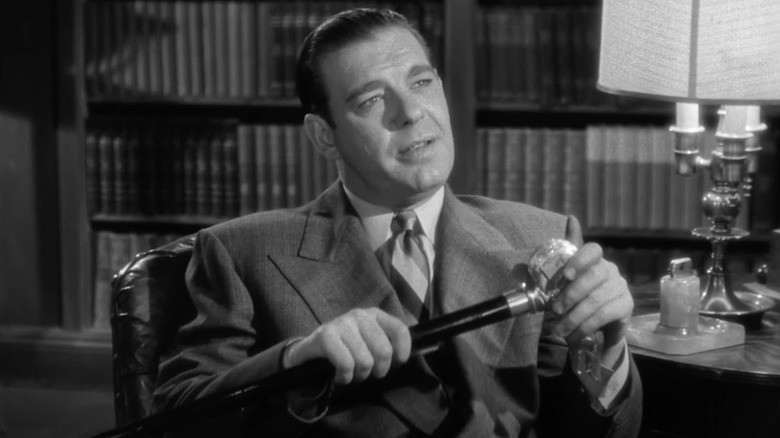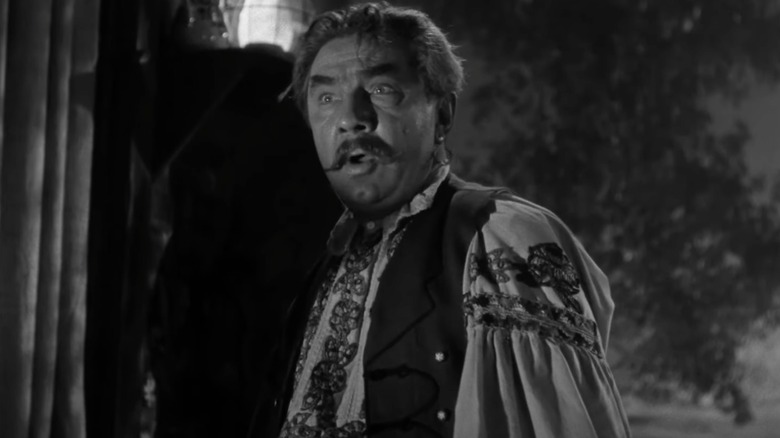The Daily Stream: If You Enjoyed Werewolf By Night, The Wolf Man Should Be Your Next Stop
(Welcome to The Daily Stream, an ongoing series in which the /Film team shares what they've been watching, why it's worth checking out, and where you can stream it.)
The Movie: "The Wolf Man" (1941)
Where You Can Stream It: Peacock, The Criterion Channel
The Pitch: "Even a man who is pure in heart and says his prayers by night may become a wolf when the wolfsbane blooms and the autumn moon is bright."
While everyone's been geeking out over Marvel's admittedly better-than-average "Werewolf by Night" this month (keeping in mind that American politics tend to support Alan Moore's recent assertions about superhero fixation being "a precursor to fascism"), I've continued resting comfortably in my dotage as a semi-retired Marvelite who is eager to see those kids in "Moon Knight" masks get off his lawn. Forget hulking out via CGI (or HulkKing, whatever). I'd rather see a man werewolf out via practical effects. Wouldn't you?
It's the same essential question of what went wrong with "The Wolfman," the 2009 remake where makeup effects trailblazer Rick Baker, who wrote the book on lycanthrope transformations in "An American Werewolf in London," had his work cast aside in favor of quick and sloppy CGI (by a director whose next project was, coincidentally, an MCU film).
At 69 minutes, the original "Wolf Man" is a little longer than "Werewolf by Night," but not by much. If you want to see the prototypical werewolf-friendly shared universe, look no further than the Universal Classic Monsters. "The Wolf Man" spawned four sequels, and the first one, "Frankenstein Meets the Wolf Man," set a new precedent for team-ups, leaving us with an early forerunner of the modern shared universe where you had characters and actors from solo films crossing over in "monster rallies."
Why it's essential viewing
When it comes to werewolf movies, "The Wolf Man" is the alpha of the pack. This is the kind of black-and-white creature feature "Werewolf by Night" was homaging. It did much to establish the tropes of later films, such as the use of silver as a weapon. (In this case, it comes not from a bullet, but a wolf-headed cane.)
The title monster doesn't rear his furry head for the first two-thirds of the movie and his actual screen time thereafter is rather limited. What's on tap instead is the patient portrait of Larry Talbot (Lon Chaney Jr.), a tragic figure who falls under the curse of an evil spell after a werewolf bites him in the mist-blanketed woods of a village near his father's castle.
"The Wolf Man" begins with an onscreen book definition of lycanthropy, or werewolfism, as "a disease of the mind in which human beings imagine they are wolf-men." Legend has it some victims "actually assume the physical characteristics of the animal."
In this way, the film mingles halfway plausible psychological explanations with occult iconography, proffering the pentagram, a symbol of magic associated with paganism and witchcraft, as the sign of the werewolf. Things like the full (as opposed to just "bright") moon and Talbot's lap-dissolve facial metamorphosis from man to wolf (which only happens in reverse here, at the end) would come into play in "Frankenstein Meets the Wolf Man."
Sir John Talbot (Claude Rains, a year before "Casablanca") also speaks of lycanthropy in terms that lay bare the movie's thematic intent. "It's a technical expression," he says, "for something very simple: the good and evil in every man's soul. In this case, evil takes the shape of an animal."
'The way you walked was thorny, through no fault of your own'
"Lost in the mazes of his mind," Talbot represents the bestial side in all of us, the part that succumbs to stress and starts missing their shooting gallery target. Because it's horror, his way of losing control is simply heightened into stalking the woods and severing jugulars. "It's an old legend. You'll find something like it in the folklore of nearly every nation..."
"The Wolf Man" rouses sympathy for its doomed protagonist, but Talbot has a creepy way of inveigling himself into the life of a woman who's already engaged to be married. He spies on her with a telescope through her window, then tries to impress her with things he knows about her. Not a good look, Larry.
No wonder he becomes such a pariah, gossiped about and stared at by churchgoers. There are other religious bits, with a stuffy reverend making the un-self-conscious statement, "Fighting against superstition is as hard as fighting against Satan himself." Elsewhere, the Wolf Man's transformational ability is likened to other cases of the mind exerting power over the body such as stigmata in the skin of zealots.
In "The Wolf Man," "good, bad, right, wrong, are many-sided, complex things." Universal's version of cross-pollination comes through a brief coffin-legacy turn by Bela Lugosi, who manages to carve out a new, distinct look from Dracula as a Gypsy fortuneteller.
It's been over a decade since I watched the Benicio-del-Toro-led "Wolfman" remake, but at the time, I remember thinking Anthony Hopkins really elevated his scenes, playing another civilized yet unapologetically evil character while spouting lines like, "The past is a wilderness of horrors." Classics like the original "Wolf Man" prove that it's not always a bad thing to go exploring that kind of wilderness.


